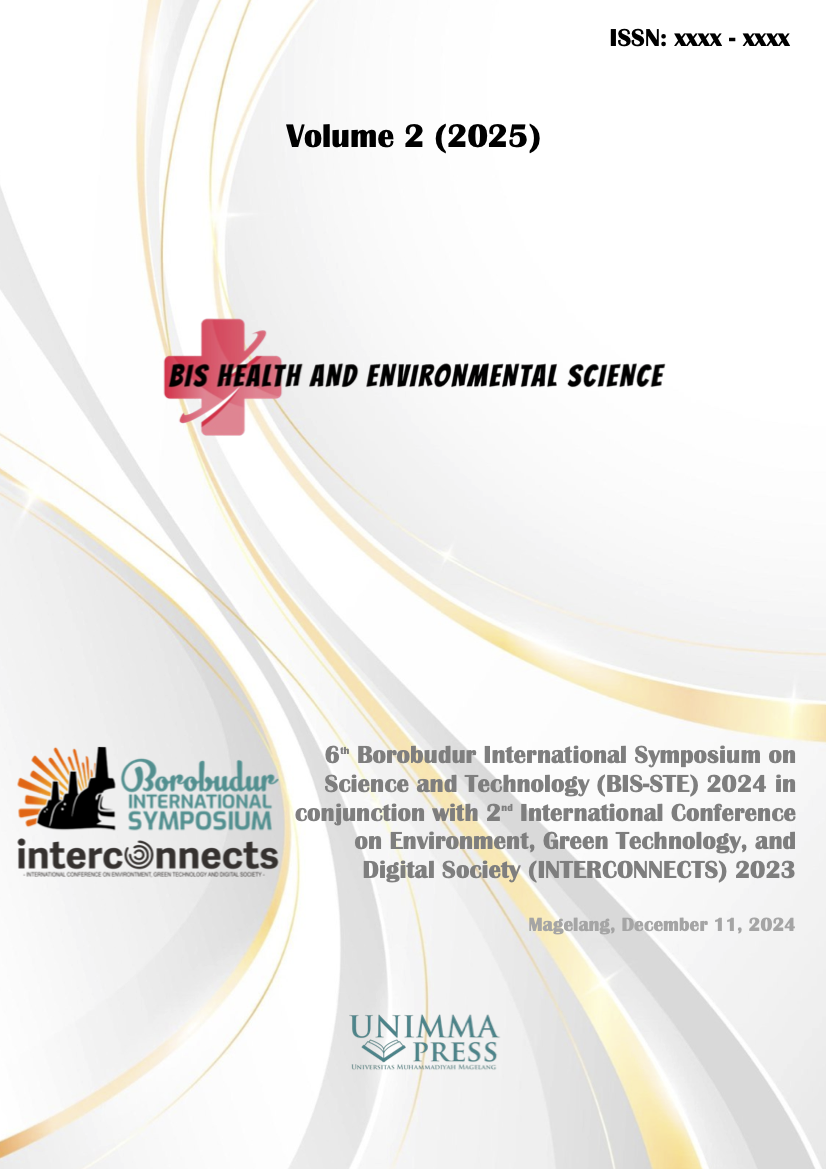Factors that influence ambulance response time in handling emergency cases in Magelang, Central Java
Keywords:
Response time, Ambulance, Emergency medical services, Pre-hospital servicesAbstract
Ambulance response time is an important factor in emergency medical services (EMS) outcomes. The Magelang region is an area with diverse conditions. However, the government has implemented a “one village one ambulance” program to improve emergency services to the community. Timely treatment can have a significant impact on patient survival and recovery. This study aims to identify and analyze factors that influence ambulance response times in handling emergency cases in the Magelang area. Using a combination of quantitative methods, data were collected from a variety of EMS providers, including urban and rural areas providing emergency services. This study examines variables such as geographic location, traffic conditions, communications, availability of ambulance units, time of day, call volume, weather conditions, and dispatch system efficiency. The sample used was the Magelang area ambulance team.
The results showed that the characteristics of the respondents were 82% village ambulances, 15% volunteer ambulances and 3% government ambulances. The majority of respondents, 88%, have worked for 1-5 years and 87% already have an ambulance training certificate. Of the 34 respondents, the average response time was 11-20 minutes (47%) and the average was 21-30 minutes (26%). Factors that influence the response time to the incident location are difficult/distant locations (88%) and 6% stated a lack of effective communication. Meanwhile, factors that influence the response time from the incident location to the health service center are sometimes traffic congestion, no communication between the ambulance team and the referral health service location, and the ambulance team’s preparedness is still lacking. This study also found that 88% of respondents stated that ambulance management was not yet effective and 97% of respondents wanted continuous ambulance team training.
References
[1] I. Jainurakhma, J., Martina, I., Sekarini, S., Fanani, Q., & Nur’aini, “Nursing Education Resilience: the Effective Strategies To Address the Challenges of Stakeholders During the Covid-19 Pandemic,” JAMP J. Adm. Dan Manaj. Pendidik., vol. 5, no. 2, pp. 105–114, 2022.
[2] H. Mitcel, “Hubungan Respon Time Petugas Ambulans Gawat Darurat dengan Keberhasilan Penanganan Pasien Cardiac Arrest.,” [1]Indonesian Sch. J. Nurs. Midwifery Sci., vol. 2, no. 04, pp. 648–655, 2022.
[3] K. K. R. Indonesia, “Pelayanan Kesehatan di Daerah Terpencil,” Jakarta, 2020.
[4] L. Kahn, C., Taylor, D., & Hyman, “Emergency Medical Services: A Systematic Approach to Quality Care.,” New Engl. J. Med., vol. 372, no. 23, pp. 2219–2227, 2016.
[5] M. Reinhardt, J., Schwartz, D., & Gonzalez, “The Role of Emergency Medical Technicians in Urban and Rural Settings,” J. Rural Heal., vol. 36, no. 2, pp. 142–150, 2020.
[6] J. Rosen, H., Langer, A., & Spira, Impact of prehospital care on trauma survival in rural settings, vol. 390. 2017.
[7] R. Sung, M., Zhang, X., & Smith, “Overcoming challenges in emergency medical services: A focus on rural and underserved areas.,” Emerg. Med. J., vol. 35, no. 7, pp. 432-438., 2017.
[8] M. Hussain, M. Z., Baig, S. F., & Ahmed, “Factors Affecting Ambulance Response Times in Emergency Medical Services,” J. Emerg. Med. Serv., vol. 42, no. 6, pp. 59–66, 2021.
[9] R. Jones, S., Smith, D., & Patel, “Emergency Response Time: A Quantitative Analysis of the Impact of Traffic and Geography on Ambulance Services.,” J. Emerg. Manag., vol. 18, no. 4, pp. 114–121, 2022.
[10] D. M. Reilly, M. J., & Cutler, “Emergency Medical Services and Response Times: Evaluating the Impact on Outcomes,” J. Health Econ., vol. 45, pp. 20–30, 2020.
Downloads
Published
Conference Proceedings Volume
Section
License

This work is licensed under a Creative Commons Attribution-NonCommercial 4.0 International License.

